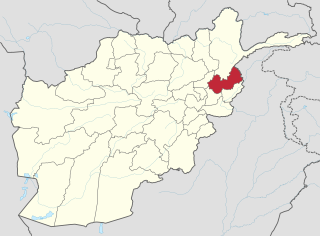Related Research Articles
Most languages of Europe belong to the Indo-European language family. Out of a total European population of 744 million as of 2018, some 94% are native speakers of an Indo-European language; within Indo-European, the three largest phyla are Romance, Germanic, and Slavic with more than 200 million speakers each, between them accounting for close to 90% of Europeans. Smaller phyla of Indo-European found in Europe include Hellenic, Baltic, Albanian, Celtic and Indo-Aryan.

Zaza is an Indo-European language spoken primarily in Eastern Turkey by the Zazas. The language is a part of the Zaza–Gorani language group of the northwestern group of the Iranian branch. The glossonym Zaza originated as a pejorative and many Zazas call their language Dimlî.

The Nuristani languages, formerly known as Kafiri languages, are one of the three groups within the Indo-Iranian language family, alongside the much larger Indo-Aryan and Iranian groups. They have approximately 130,000 speakers primarily in eastern Afghanistan and a few adjacent valleys in Khyber Pakhtunkhwa's Chitral District, Pakistan. The region inhabited by the Nuristanis is located in the southern Hindu Kush mountains, and is drained by the Alingar River in the west, the Pech River in the center, and the Landai Sin and Kunar rivers in the east. The languages were previously often grouped with Indo-Aryan or Iranian until they were finally classified as forming a third branch in Indo-Iranian.
The Pamir languages are an areal group of the Eastern Iranian languages, spoken by numerous people in the Pamir Mountains, primarily along the Panj River and its tributaries.
Bukhori, also known as Bukharian, is a dialect of the Tajik branch of the Persian language spoken by Bukharian Jews.
Gawar-Bati or Narsati is a Dardic language spoken in the Chitral region of northern Pakistan, and across the border in Afghanistan. It is also known as Aranduyiwar in Chitral because it is spoken in Arandu, which is the last village in lower Chitral and is also across the border from Berkot in Afghanistan. There are about 9,000 speakers of Gawar-Bati, with 1,500 in Pakistan, and 7,500 in Afghanistan. The name Gawar-Bati means "speech of the Gawar", a people detailed by the Cacopardos in their study of the Hindu Kush.

Northeastern Neo-Aramaic is a variety of Modern Aramaic languages once spoken in a large region stretching from the plain of Urmia, in northwestern Iran, to the plain of Mosul, in northern Iraq, as well as bordering regions in south east Turkey and north east Syria.
Sivandi is an Iranian language spoken in Fars Province, Iran, one of five listed in Ethnologue which together have 35,000 speakers.
Sangsari or Sangisari is an Iranian language spoken mainly in the Semnan and Tehran provinces of Iran, especially in the Sangesar town and in several surrounding villages. Sangsari is included in the Semnani group of Northwestern Iranian languages that also includes Lasgerdi, Semnani, and Sorkhei. There are around 50,000 Sangsari speakers.

The Republic of Chile is an overwhelmingly Spanish-speaking country, with the exceptions of isolated native and immigrant communities. According to Ethnologue, Chile has nine living languages and seven extinct.
Parya is a Central Indo-Aryan language spoken in parts of Afghanistan, Uzbekistan and Tajikistan especially in the city of Dushanbe. Tajuzbeki was an alternative name coined by Bholanath Tiwari for the same language. Much of the academic research in documenting and characterizing this isolated Indo-Aryan language was done by prominent Soviet linguist I. M. Oranski.
Asuri is an Austroasiatic language spoken by the Asur people, part of the Munda branch. Asuri has many Dravidian loanwords due to contact with Kurukh.

Sámi languages, in English also rendered as Sami and Saami, are a group of Uralic languages spoken by the Sámi people in Northern Europe. There are, depending on the nature and terms of division, ten or more Sami languages. Several spellings have been used for the Sámi languages, including Sámi, Sami, Saami, Saame, Sámic, Samic and Saamic, as well as the exonyms Lappish and Lappic. The last two, along with the term Lapp, are now often considered pejorative.
Jaḍgālī is an Indo-Aryan language spoken by the Jadgal, an ethno-linguistic group of Pakistan and Iran. It is one of only two Indo-Aryan languages found on the Iranian plateau. It is a dialect of Sindhi most closely related to Lasi.
Gazi is one of the Central Iranian varieties of Iran, one of five listed in Ethnologue that together have 35,000 speakers.
Nayini (Na'ini), or Biyabanak, is one of the Central Iranian varieties of Iran, one of five listed in Ethnologue that together have 35,000 speakers.
Soi (Sohi) is one of the Central Iranian language varieties of Iran, one of five listed in Ethnologue that together have 35,000 speakers. It is closely related to Natanzi.
References
- ↑ Ethnologue gives a figure of 7,030. However, this is a guestimate based on 35,000 speakers divided among five recognized languages.
- ↑ Natanzi at Ethnologue (18th ed., 2015)
- ↑ Endangered Languages Project data for Natanzi.
| | This Iran-related article is a stub. You can help Wikipedia by expanding it. |